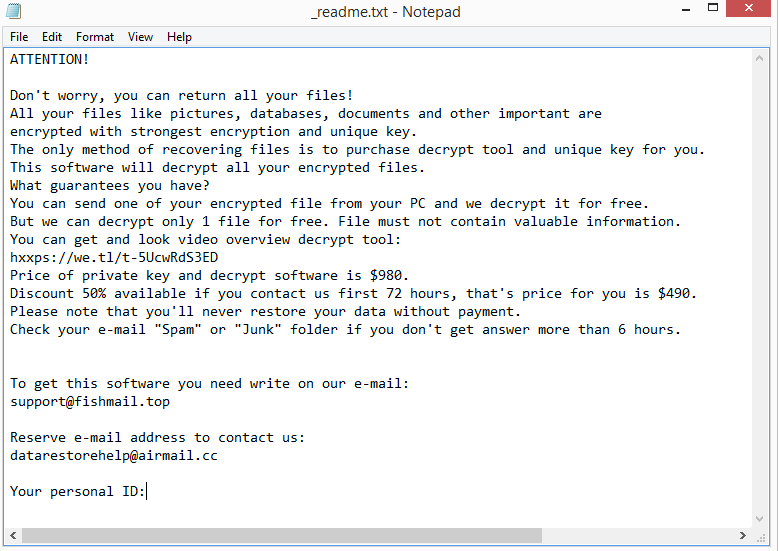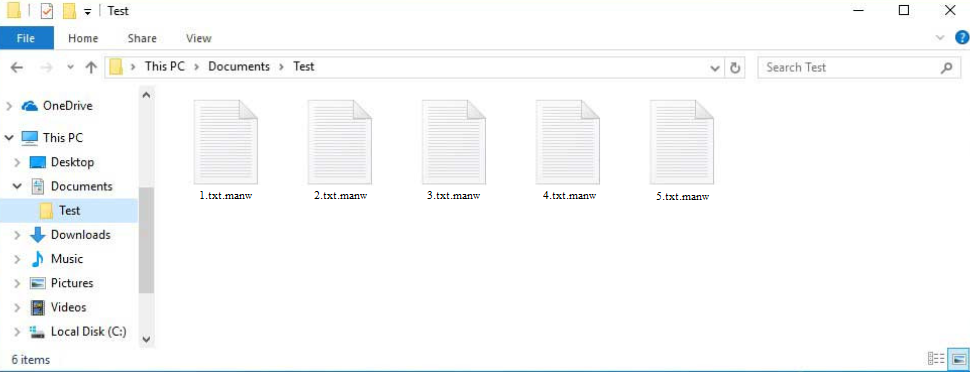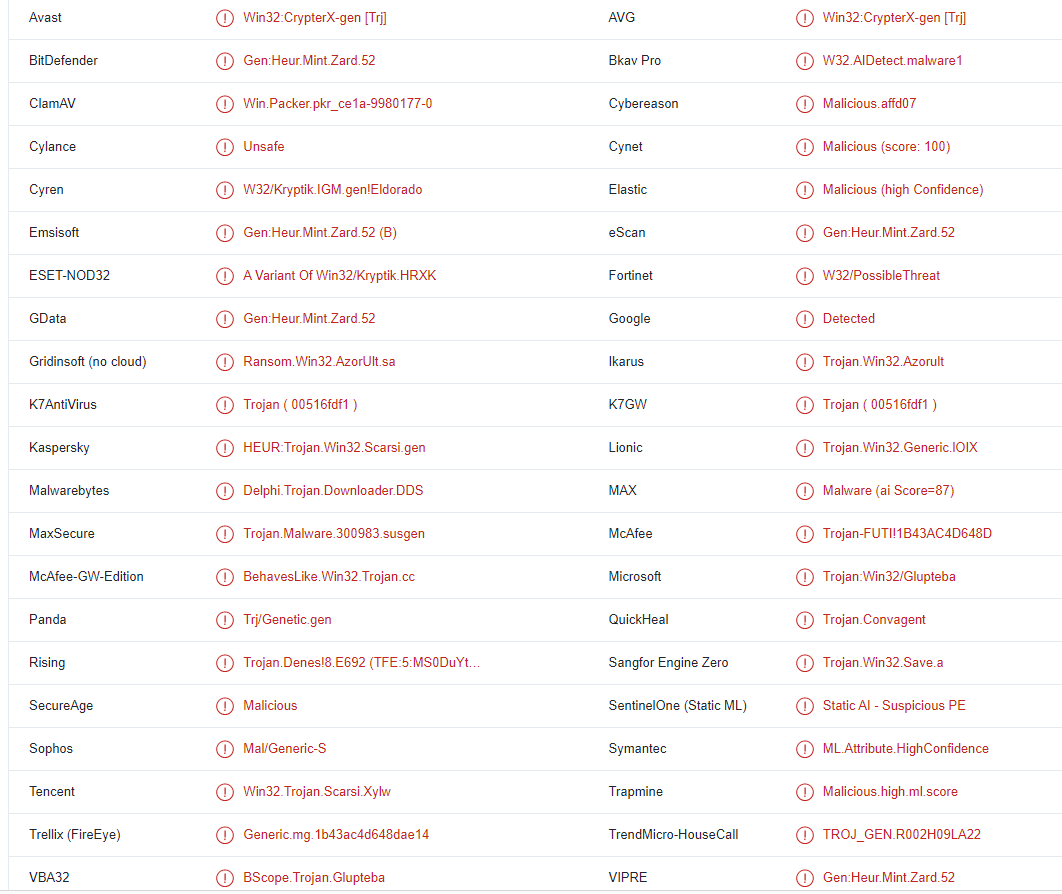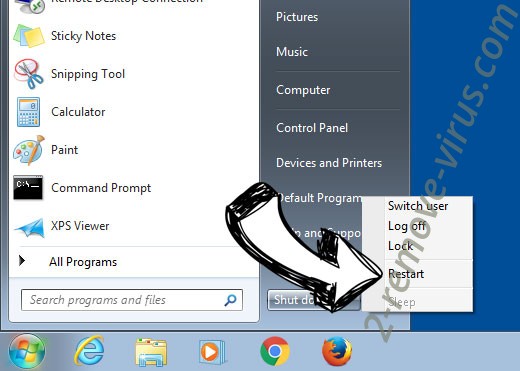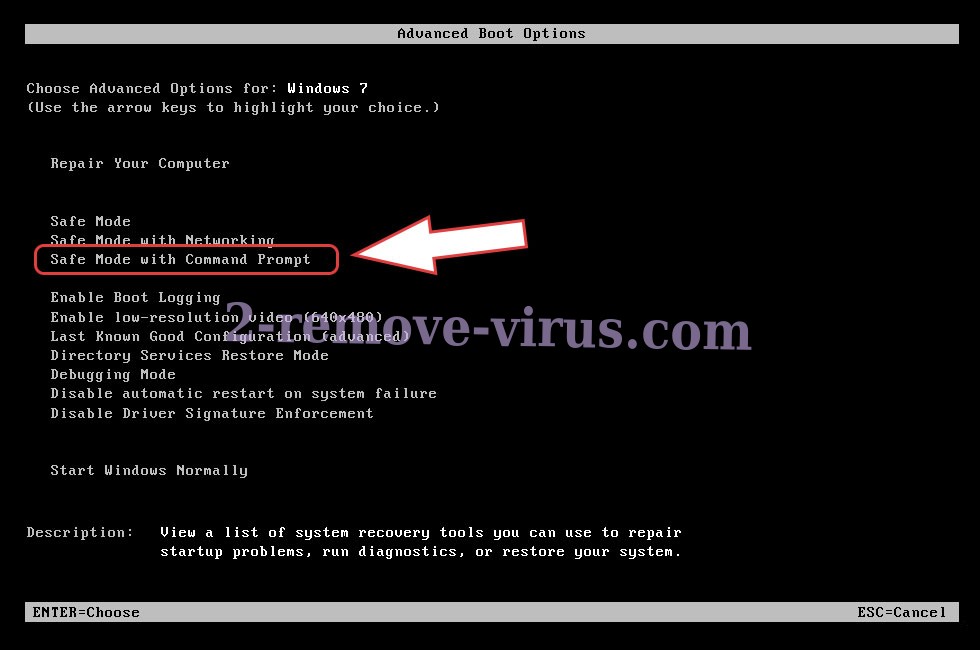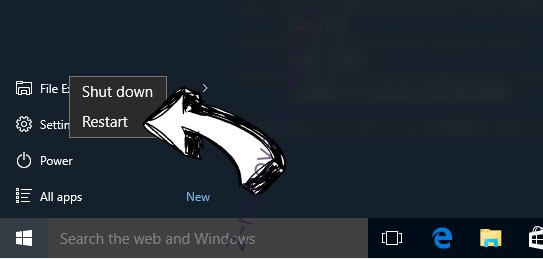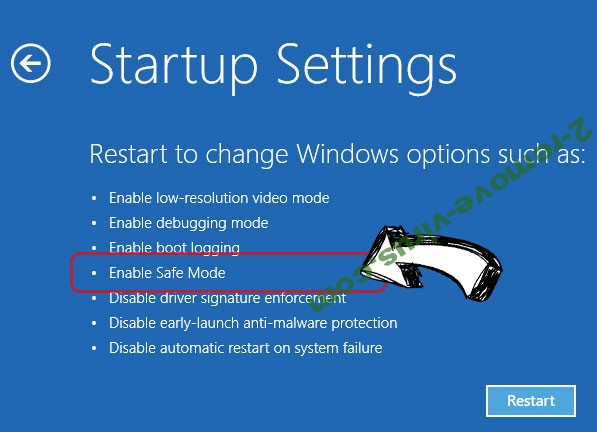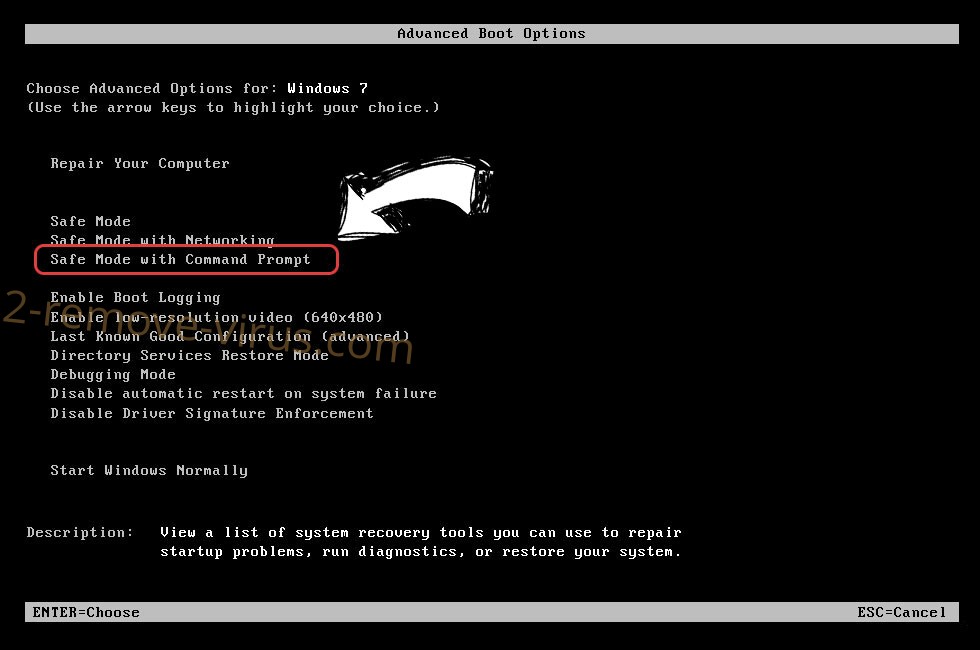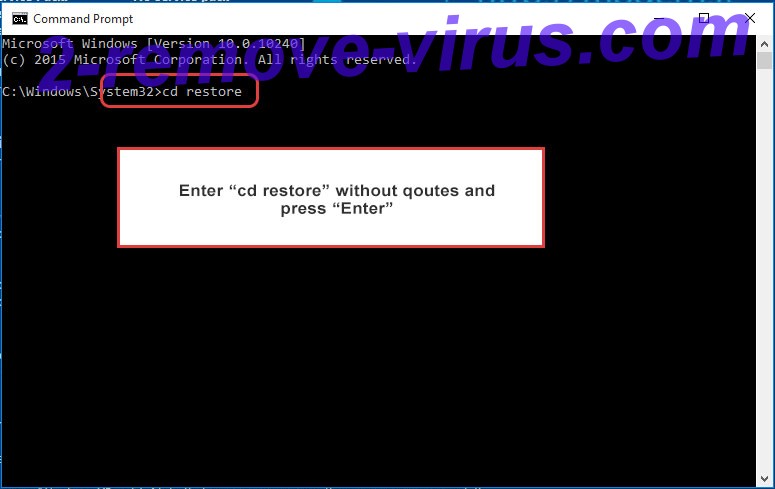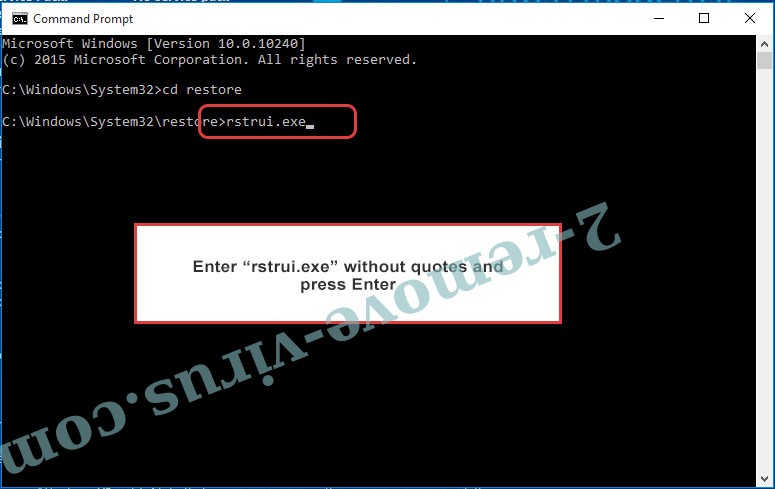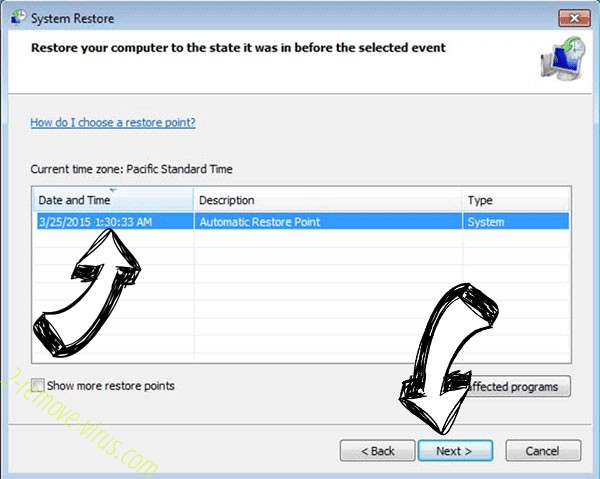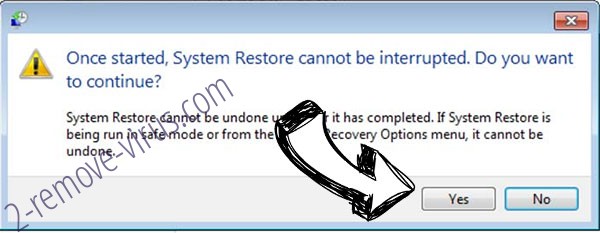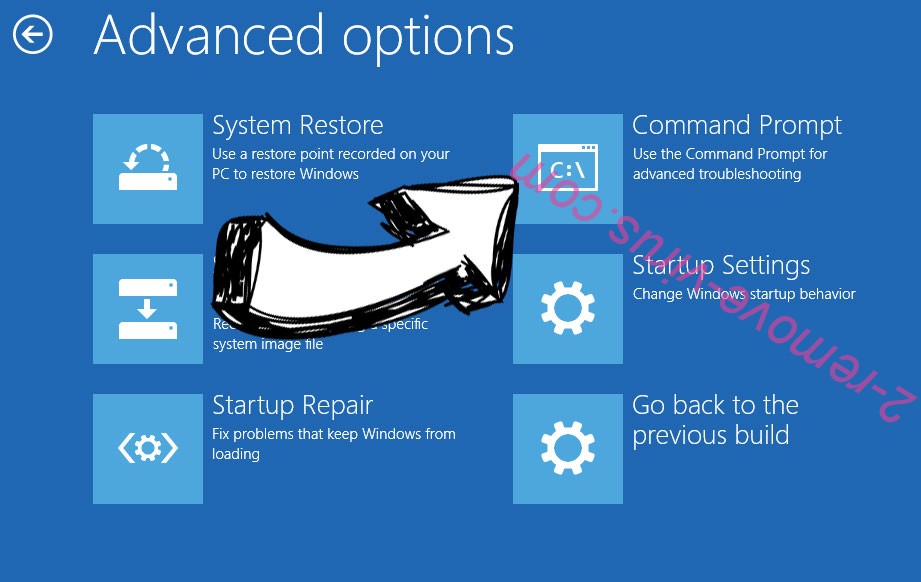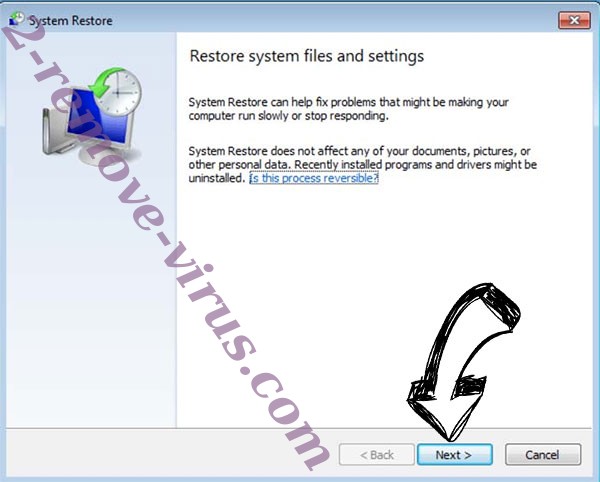Manw ransomware is malware that encrypts files. It is one of the most recent Djvu/STOP ransomware versions. All files that are encrypted get the .manw extension, and you can only open them once they have been decrypted. Because they are the most precious to users, this ransomware primarily targets personal files. The malicious actors will offer you a decryptor for $980, but before you pay, you should consider all the risks involved in doing business with malicious actors.
Photos, videos, and documents are the most common personal file types that are targeted by ransomware. The encrypted files will be simple to recognize because of the .manw extension. For instance, image.jpg would become image.jpg.manw if it were encrypted. No files with this extension will be openable unless they are first decrypted. However, getting the decryptor won’t be simple given that only cybercriminals have it. The _readme.txt ransom note that is dropped in every folder containing encrypted files explains how victims can get it.
Manw ransomware decryptor costs $980, according to the ransom note. In addition, victims who get in touch with cybercriminals in the first 72 hours can supposedly get a 50% discount. Whether or not that is true, paying the ransom is not a great idea. You are dealing with cyber criminals, therefore there is no guarantee that you will get a decryptor even if you pay the ransom. Victims in the past have not received their decryptors, despite paying the requested ransoms. You should also keep in mind that your money would go towards future criminal activities.
Unless users have a backup, they won’t be able to recover their files because there presently is no free Manw ransomware decryptor. The Djvu/STOP ransomware family encrypts files using online keys, thus each victim has a different key. You would need to have your unique key for a decryptor to work on your files. However, since only the malware operators have those keys, it is unlikely that a free Manw ransomware decryptor would ever be released. The possibility exists that the keys could someday be released if cybercriminals ever decide to stop their malicious operations or if they are ever apprehended by law enforcement agencies.
We also feel it’s important to warn you about the numerous fraudulent decryptors that are advertised on dubious forums. You won’t find a decryptor on a random forum if you can’t find it on a website like NoMoreRansom. If you’re not careful, you might potentially download something malicious.
If you have a backup of your files, you can start recovering them as soon as you remove Manw ransomware from your computer. Manw ransomware is a sophisticated infection that should not be removed manually unless you are very familiar with the process. Thus, we strongly advise using anti-virus software to get rid of it. If you attempt to manually delete Manw ransomware, you could end up causing even more damage.
How did Manw ransomware enter your computer?
If you have bad online habits, malware is more likely to affect you. Users are always urged to exercise caution and develop better online habits because of this. For instance, something as simple as downloading a torrent or opening the wrong email attachment could cause a major malware infection.
To distribute malware, cybercriminals frequently use email attachments. They typically buy email addresses from hacker forums and then target thousands of victims at once. They attach malicious files in emails that appear to be sent by legitimate companies. Fortunately for users, the emails are typically quite poorly written and easy to identify. Grammar and spelling mistakes are often the most glaring red flag in these emails. The mistakes are particularly obvious because malicious senders generally pose as representatives of legitimate companies. Legitimate emails are unlikely to have any mistakes because they appear unprofessional.
Another warning sign is when you get emails supposedly from a company whose services you use but they refer to you as “User”, “Member”, or “Customer” rather than by your name. To make emails feel more personal, companies usually include customers’ names in them. However, malicious actors use generic language because they typically target hundreds if not thousands of users at once and do not have access to their personal information.
Malicious actors can create substantially more sophisticated malicious emails if they target a specific person and have access to some of their personal data. These emails would have no mistakes, use names when addressing recipients, and include information that would give the emails more credibility. Therefore, before opening any unsolicited email attachments, it is strongly advised to scan them with anti-virus software or VirusTotal.
And finally, torrents are commonly used to distribute malware. Because torrent services are often poorly monitored, malicious torrents can be posted by cyber criminals. Using torrents to get free copyrighted content dramatically raises your risk of encountering malware so keep that in mind. The majority of malware is typically discovered in entertainment-related torrents, especially in torrents for video games, movies, and TV shows. Therefore, downloading copyrighted content using torrents is not only technically theft but it’s dangerous for your computer and data.
How to remove Manw ransomware
Manw ransomware is a sophisticated infection, therefore trying to manually remove it is not a good idea. If you don’t know what you’re doing, you risk further harming your computer. It’s a complicated process that should be left to professionals. It is significantly safer and easier to remove Manw ransomware with anti-virus software. Once the ransomware has been completely removed from the computer, you may access your backup if you have it and start restoring your files.
If you don’t have backup copies of your files, your only choice is to wait for a free Manw ransomware decryptor to be made available. However, there are no guarantees that it will ever be released. While you wait for a free decryptor to be released, it is advised to create a backup of your encrypted files.
Manw ransomware is detected as:
- Win32:CrypterX-gen [Trj] by Avast/AVG
- Gen:Heur.Mint.Zard.52 by BitDefender
- Gen:Heur.Mint.Zard.52 (B) by Emsisoft
- A Variant Of Win32/Kryptik.HRXK by ESET
- HEUR:Trojan.Win32.Scarsi.gen by Kaspersky
- Delphi.Trojan.Downloader.DDS by Malwarebytes
- Trojan:Win32/Glupteba by Microsoft
- Trojan-FUTI!1B43AC4D648D by McAfee
Quick Menu
Step 1. Delete Manw ransomware using Safe Mode with Networking.
Remove Manw ransomware from Windows 7/Windows Vista/Windows XP
- Click on Start and select Shutdown.
- Choose Restart and click OK.

- Start tapping F8 when your PC starts loading.
- Under Advanced Boot Options, choose Safe Mode with Networking.

- Open your browser and download the anti-malware utility.
- Use the utility to remove Manw ransomware
Remove Manw ransomware from Windows 8/Windows 10
- On the Windows login screen, press the Power button.
- Tap and hold Shift and select Restart.

- Go to Troubleshoot → Advanced options → Start Settings.
- Choose Enable Safe Mode or Safe Mode with Networking under Startup Settings.

- Click Restart.
- Open your web browser and download the malware remover.
- Use the software to delete Manw ransomware
Step 2. Restore Your Files using System Restore
Delete Manw ransomware from Windows 7/Windows Vista/Windows XP
- Click Start and choose Shutdown.
- Select Restart and OK

- When your PC starts loading, press F8 repeatedly to open Advanced Boot Options
- Choose Command Prompt from the list.

- Type in cd restore and tap Enter.

- Type in rstrui.exe and press Enter.

- Click Next in the new window and select the restore point prior to the infection.

- Click Next again and click Yes to begin the system restore.

Delete Manw ransomware from Windows 8/Windows 10
- Click the Power button on the Windows login screen.
- Press and hold Shift and click Restart.

- Choose Troubleshoot and go to Advanced options.
- Select Command Prompt and click Restart.

- In Command Prompt, input cd restore and tap Enter.

- Type in rstrui.exe and tap Enter again.

- Click Next in the new System Restore window.

- Choose the restore point prior to the infection.

- Click Next and then click Yes to restore your system.

Offers
Download Removal Toolto scan for Manw ransomwareUse our recommended removal tool to scan for Manw ransomware. Trial version of provides detection of computer threats like Manw ransomware and assists in its removal for FREE. You can delete detected registry entries, files and processes yourself or purchase a full version.
More information about SpyWarrior and Uninstall Instructions. Please review SpyWarrior EULA and Privacy Policy. SpyWarrior scanner is free. If it detects a malware, purchase its full version to remove it.

WiperSoft Review Details WiperSoft (www.wipersoft.com) is a security tool that provides real-time security from potential threats. Nowadays, many users tend to download free software from the Intern ...
Download|more


Is MacKeeper a virus? MacKeeper is not a virus, nor is it a scam. While there are various opinions about the program on the Internet, a lot of the people who so notoriously hate the program have neve ...
Download|more


While the creators of MalwareBytes anti-malware have not been in this business for long time, they make up for it with their enthusiastic approach. Statistic from such websites like CNET shows that th ...
Download|more
Site Disclaimer
2-remove-virus.com is not sponsored, owned, affiliated, or linked to malware developers or distributors that are referenced in this article. The article does not promote or endorse any type of malware. We aim at providing useful information that will help computer users to detect and eliminate the unwanted malicious programs from their computers. This can be done manually by following the instructions presented in the article or automatically by implementing the suggested anti-malware tools.
The article is only meant to be used for educational purposes. If you follow the instructions given in the article, you agree to be contracted by the disclaimer. We do not guarantee that the artcile will present you with a solution that removes the malign threats completely. Malware changes constantly, which is why, in some cases, it may be difficult to clean the computer fully by using only the manual removal instructions.
